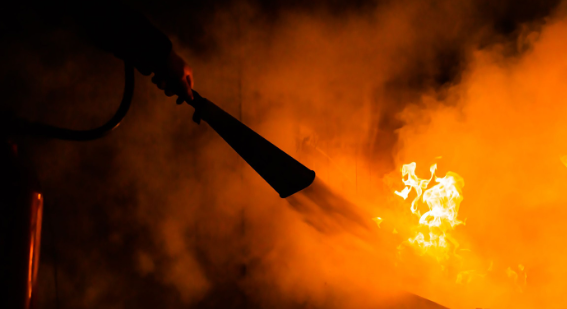The concept of multi-generational living, where family members from different generations reside together, is becoming increasingly popular. This unique living arrangement offers several benefits but also introduces specific fire safety challenges:
-
Dynamics of Multi-Generational Living:
- Varied Age Groups Under One Roof: From toddlers to seniors, each age group has distinct needs and capabilities.
- Benefits and Challenges: While fostering closer family bonds, it requires special attention to safety needs.
-
Unique Fire Safety Challenges in Multi-Generational Homes:
- Diverse Safety Needs: Tailoring fire safety measures to accommodate everyone from children to the elderly.
- Customized Escape Plans: Creating evacuation plans that consider mobility limitations of older adults and the supervision needs of children.
In this article, we will delve into these aspects, aiming to provide a comprehensive guide to fire safety that caters to the diverse needs of a multi-generational household.

Fire Risks Assessment for Different Age Groups
Tailoring Fire Safety to Children and Teens Children and teens often require specific attention in fire safety. Education plays a key role here. Teaching them about the dangers of playing with matches, lighters, and other fire hazards is crucial. Creating safe zones in the house, where potentially dangerous items are kept out of reach, is also important. For teenagers, emphasizing the responsibility they hold in maintaining a safe environment, especially when caring for younger siblings, is vital.
Special Considerations for Elderly Residents Elderly individuals may face unique challenges during emergencies due to mobility or sensory limitations. Ensuring their safety involves making fire emergency tools and exits accessible. Installing audible and visual fire alarms can be beneficial for those with hearing or vision impairments. Additionally, adapting their living spaces to reduce trip hazards can significantly increase their ability to evacuate quickly and safely in case of a fire.
Creating a Safe Home Environment
Childproofing Against Fire Hazards Childproofing a home is essential in minimizing fire risks. This includes securing potentially hazardous items and installing safety devices on appliances. For example, keeping matches and lighters in locked cabinets and using stove knob covers can prevent accidental fires. It’s also important to educate children about the hazards of touching or playing with cooking appliances, electrical outlets, and cords.
Adapting Homes for the Elderly: Mobility and Accessibility For elderly residents, adapting the home environment is crucial for fire safety. This might involve rearranging furniture to create clear pathways, especially for those using walkers or wheelchairs. Ensuring fire safety equipment, like extinguishers and alarms, are within easy reach and that exits are easily accessible can make a significant difference in an emergency situation.
Essential Fire Safety Equipment
Smoke Alarms: Placement and Maintenance Smoke alarms are a critical component of home fire safety. They should be placed in key areas of the home, including near bedrooms and in the kitchen. Regular maintenance, such as testing the alarms monthly and replacing batteries annually, is crucial to ensure they function properly when needed.
Fire Extinguishers: Selection and Accessibility Choosing the right type of fire extinguisher for your home and ensuring it is easily accessible is essential. Different types of fires require different extinguishers, so it’s important to have the correct type and to train all family members on how to use them. Placing them in strategic locations where they can be quickly accessed in an emergency is also key.

Fire Escape Planning for the Whole Family
Designing an Inclusive Fire Escape Plan Creating a fire escape plan that accommodates everyone in a multi-generational home is essential. This includes considering the mobility of elderly residents and the understanding level of children. The plan should identify primary and secondary escape routes from different parts of the house and assign specific roles to family members, including who is responsible for assisting others.
Conducting Regular Fire Drills with All Family Members Regularly practicing fire drills ensures that each family member knows what to do in the event of a fire. These drills should mimic potential real-life scenarios and involve practicing different routes. Special attention should be given to ensuring that children and elderly family members feel comfortable and confident in executing the plan.
Fire Safety Education and Awareness
Teaching Children About Fire Safety Educating children about fire safety is crucial. This can include teaching them not to play with matches or lighters, understanding the sound of smoke alarms, and knowing what to do when they hear one. Interactive and engaging methods like games and storytelling can be effective in teaching these concepts.
Ensuring Elderly Family Members Understand Fire Risks and Responses For elderly family members, it’s important to ensure they are aware of fire risks and the specific actions they should take in an emergency. This might involve providing them with easy-to-understand instructions and ensuring they know how to operate safety equipment or use emergency communication devices.
Technological Aids for Fire Safety
Utilizing Smart Home Devices for Enhanced Safety Smart home devices, such as connected smoke detectors and fire alarms, can offer enhanced safety features. These devices can provide real-time alerts to your phone, even when you’re not at home, and can be linked to other smart home systems for automated responses, like shutting off the power in case of a fire.
Emergency Communication Systems for Quick Response Implementing emergency communication systems, such as panic buttons or emergency call features through smart devices, can ensure a quick response in case of a fire. These systems can be especially useful for elderly residents who might need immediate assistance in evacuating the home.

-
Community Resources and Support
Leveraging Community Fire Safety Programs Community fire safety programs can be a valuable resource for multi-generational households. These programs often offer fire safety education, training sessions, and sometimes even assist with fire safety assessments for homes. Participating in these programs can enhance a family’s understanding of fire risks and the latest prevention techniques.
Building a Support Network for Multi-Generational Homes Creating a support network within your community can be beneficial. This network can include neighbors, local fire departments, and community groups. They can offer assistance during emergencies, share resources, and provide valuable support in maintaining fire safety standards in your home.
Conclusion
The journey towards ensuring comprehensive fire safety in multi-generational homes is continuous and involves the collaboration of every family member. It’s about creating an environment where safety is a priority, and where each person, irrespective of their age, understands their role in maintaining this safety. The process is dynamic, requiring ongoing education, adaptation of safety measures, and leveraging community support. By taking these steps, families can create a safer home environment, one where the joy of living together across generations is not overshadowed by the risks of fire hazards.

